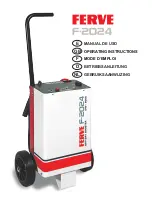
Driving in Mud, Sand, Snow, or Ice
When you drive in mud, snow, or sand, the wheels do
not get good traction. Acceleration is not as quick,
turning is more difficult, and braking distances are
longer.
It is best to use a low gear when in mud — the deeper
the mud, the lower the gear. In really deep mud,
keep the vehicle moving so it does not get stuck.
When driving on sand, wheel traction changes. On
loosely packed sand, such as on beaches or sand
dunes, the tires will tend to sink into the sand. This
affects steering, accelerating, and braking. Drive
at a reduced speed and avoid sharp turns or abrupt
maneuvers.
Hard packed snow and ice offer the worst tire traction.
On these surfaces, it is very easy to lose control.
On wet ice, for example, the traction is so poor that you
will have difficulty accelerating. And, if the vehicle
does get moving, poor steering and difficult braking can
cause it to slide out of control.
{
CAUTION:
Driving on frozen lakes, ponds, or rivers can be
dangerous. Underwater springs, currents under
the ice, or sudden thaws can weaken the ice. Your
vehicle could fall through the ice and you and your
passengers could drown. Drive your vehicle on
safe surfaces only.
4-24
Summary of Contents for 2009 Avalanche
Page 6: ... NOTES vi ...
Page 23: ...Put someone on it Get it up to speed Then stop the vehicle The rider does not stop 1 17 ...
Page 86: ... NOTES 1 80 ...
Page 183: ... NOTES 3 3 ...
Page 184: ...Instrument Panel Overview 3 4 ...
Page 380: ... NOTES 4 68 ...
Page 498: ... NOTES 5 118 ...
Page 514: ...Engine Drive Belt Routing 6 16 ...
















































